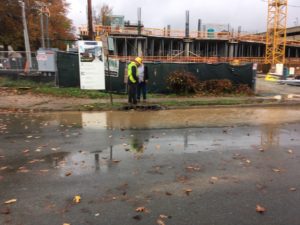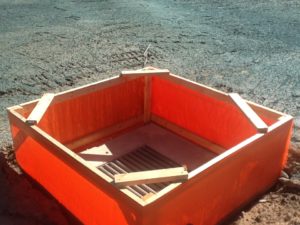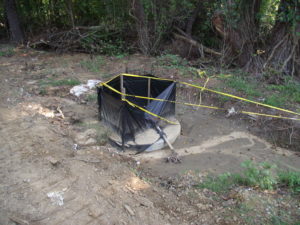Little Bobby & Big Bobby: An Erosion Control Drama
Little Bobby and Big Bobby were standing about four feet apart, work boots rooted in the construction mud. Excavation contractor Big Bobby, a mountain of a man, was swinging a shovel above his head like a helicopter blade in motion, cursing loudly as he swung. The County erosion control inspector Little Bobby, small of stature but stiff of spine, was holding his ground, growling his reaction to the shovel blade spinning just above head level. What was the argument about? Inlet protection.
If you are not sure what inlet protection is, or why is might be worth the trouble of a heated argument, see the mini-primer at the end of this article.
It was the early 1990s and my first week of work as the County’s water manager. Little Bobby, as part of my initiation, asked me to accompany him on his E&S inspection rounds. I was, as they say, green. At Big Bobby’s site, I nervously watched the two Bobbies in their escalating feud over inlet protection, avoiding eye contact with either of the angry Bobbies. As the shovel started swinging, I slowly backed away in an attempt to disappear behind the parked construction equipment, eyes fixed on Little Bobby’s work boots in the mud. Somehow the confrontation ended, and Little Bobby said, “well, let’s go check out the next site.”

Site grading often involved clearing property line to property line, creating an erosion and sediment control challenge. Photo: D. Hirschman
Little Bobby was the County’s first E&S inspector and administrator, and, in those days, had to shoulder the responsibility of changing what had been many years of “the ways things are done” on construction sites. The old ways died hard, and did not involve much in the way of E&S planning, implementation, or compliance. Little Bobby dispatched his mission site-by-site, contractor-by-contractor, day-by-day in a grinding process of setting new standards and enforcing them. When they talk about standing on the shoulders of giants, Little Bobby was a little giant.
Over the course of the next decade, Little Bobby and I visited many sites, and I learned how he observed the land and the process of land disturbance, always looking first to the drainage area and the methodical ways to control erosion and sedimentation. When the new generation of stormwater practices, such as bioretention, were gaining a foothold in our County, I was advocating for the innovations, but Little Bobby gave me untold grief about how stupid he thought they were, his experience rooted in the reliability of the big basins.
At that point, I realized I was the one standing for a new way of doing business, just as I had seen Little Bobby doing in years past. Ironically, the shovel-wielding Big Bobby and I developed a very collegial relationship, and he became a key ally among the contractor community for building BMPs the right way.
While I have made an excellent career from stormwater management, I have always considered E&S as stormwater bootcamp. You can’t do a crappy job of E&S and expect a fancy bioretention practice to save the day. In that regard, perhaps it is true. . .inlet protection is worth a good argument.
David J. Hirschman, dave@hirschmanwater.com
A Little Primer on Inlet Protection
Just about every erosion and sediment control handbook has a section on inlet protection, as it is an essential sediment control practice during construction. The Virginia Erosion & Sediment Control Handbook describes inlet protection and its purpose as follows:
Definition: A sediment filter or an excavated impounding area around a storm drain drop inlet or curb inlet.
Purpose: To prevent sediment from entering storm drainage systems prior to permanent stabilization of the disturbed area.
Inlet protection is one of 39 erosion and sediment control practices specified in Virginia’s Handbook (3rd Edition, 1992, Virginia Department of Conservation & Recreation).
The following photos provided by Virginia DEQ stormwater and erosion control trainer extraordinaire, Tamira Cohen, show examples of inlet protection in various states of competency.
If you’d like to become a certified erosion control inspector or plan reviewer in Virginia, you can find out how here. Other states may have similar training and certification programs, and there are also some national certifications.

Gotta love the symmetry, but this curb inlet protection leaves a lot to be desired (Photo: Tamira Cohen).

This is curb inlet protection during a storm. There are several issues here, including that the inlet protection is also causing a bit of street flooding. Erosion control is tricky stuff! (Photo: David Hirschman).


